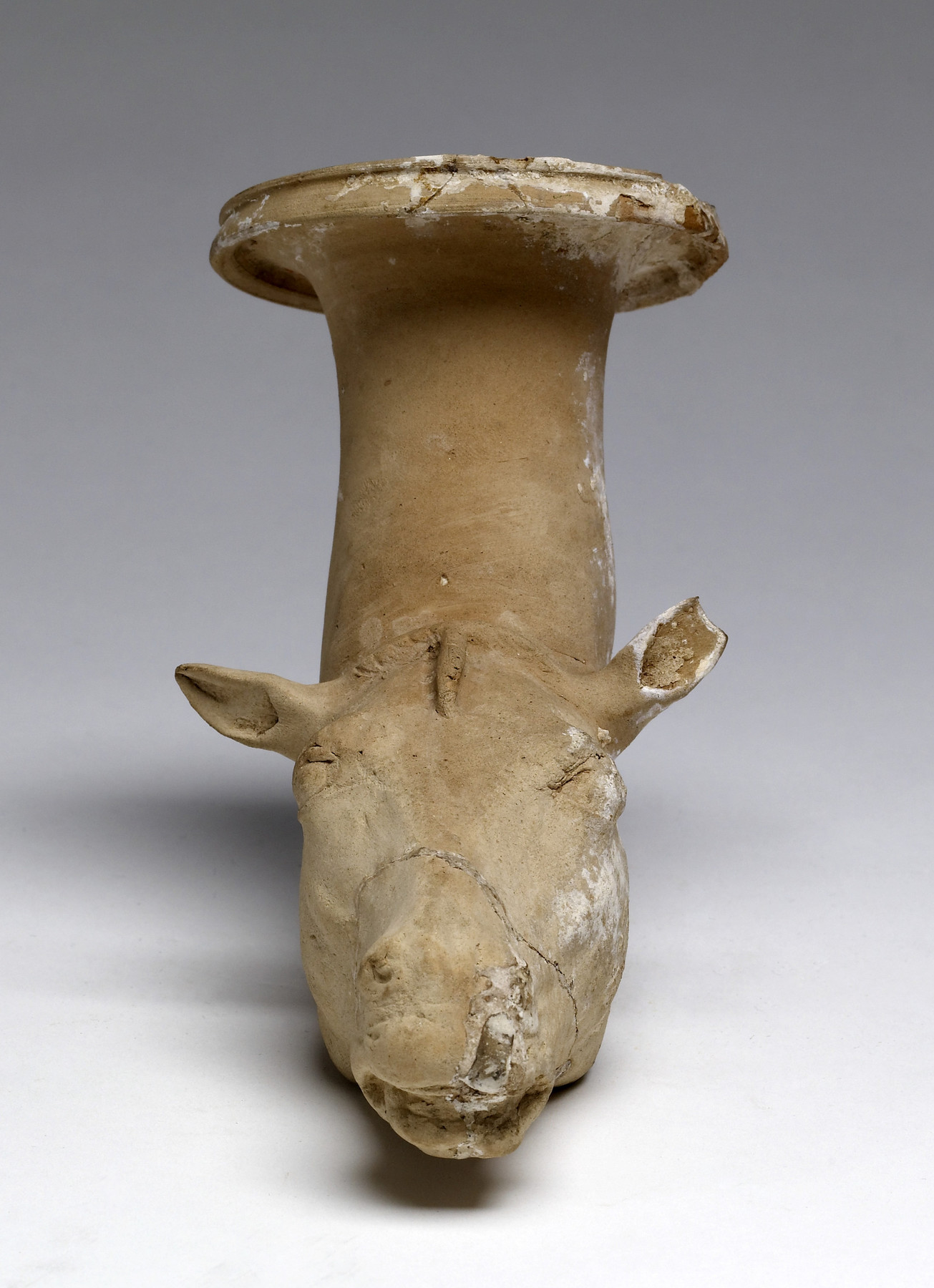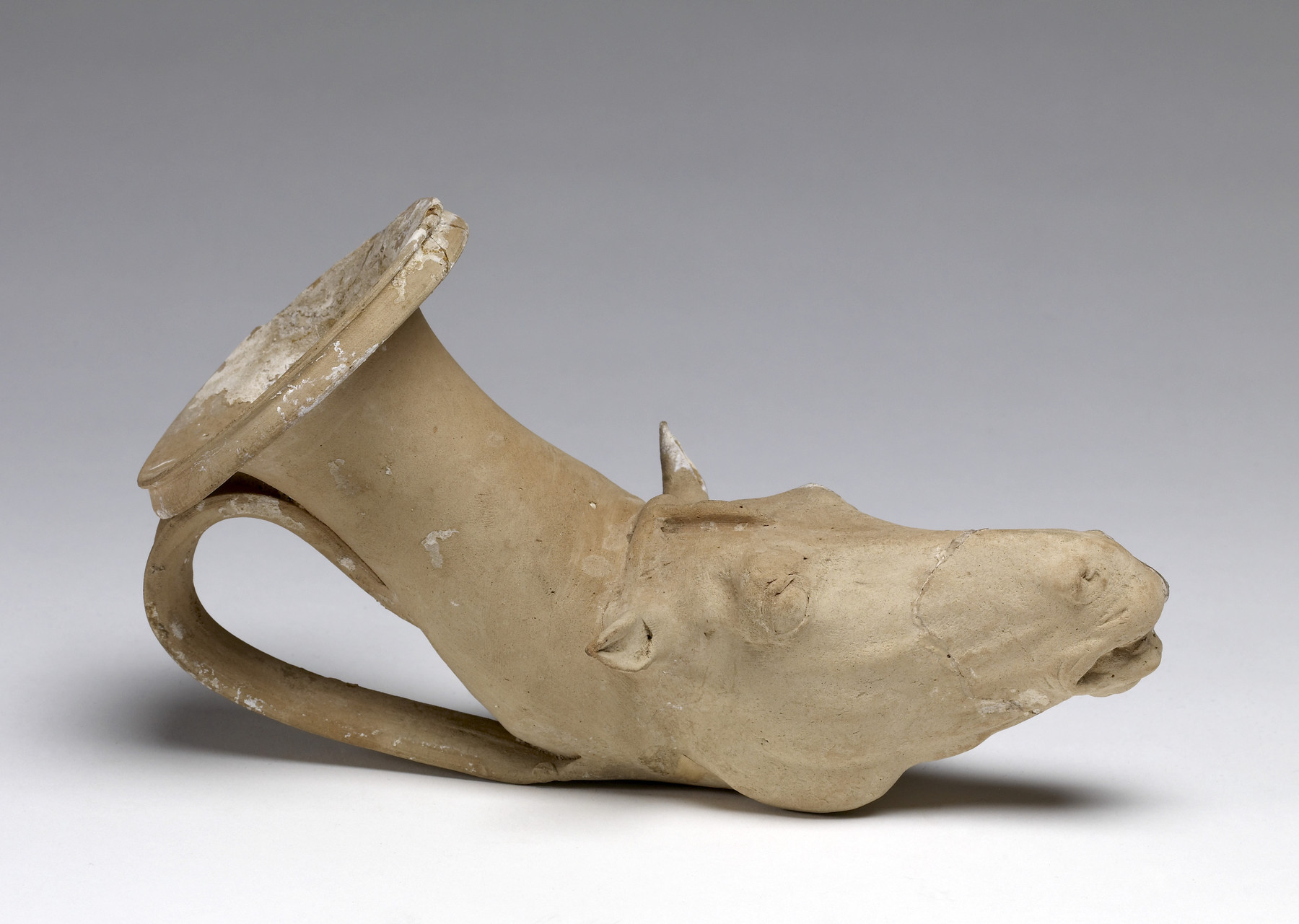Rhyton in the Form of a Horse's Head
(Ancient Greece )
The mold-made lower portion of this drinking vessel was attached to the wheel-thrown neck prior to firing. The style of this rhyton indicates that it was made in the Greek colonies of southern Italy. Rhyta were produced in a variety of head shapes, including human; rams, mules, horses, deer, and griffins were especially popular. When lifted to the face for a drink, these rhyta might appear to be fabulous masks, but this delicate cup may not have been meant for daily use and may instead have been made as a funerary offering.
Provenance
Provenance (from the French provenir, 'to come from/forth') is the chronology of the ownership, custody, or location of a historical object. Learn more about provenance at the Walters.
Eleanor Blodgett, New York, by 1924, [mode of acquisition unknown]; Joseph Brummer Gallery, Inc., New York, 1924, by purchase [Brummer inv. no. N712]; Henry Walters, Baltimore, by purchase, 1925; Walters Art Museum, 1931, by bequest.
Conservation
| Date | Description | Narrative |
|---|---|---|
| 5/19/2017 | Examination | inpainted; media consolidation |
Geographies
Italy, Apulia, Magna Graecia, Tarentum (Place of Origin)
Measurements
L: 8 1/16 × W: 3 3/8 × D: 4 5/16 in. (20.4 × 8.5 × 11 cm)
Credit Line
Acquired by Henry Walters, 1924
Location in Museum
Accession Number
In libraries, galleries, museums, and archives, an accession number is a unique identifier assigned to each object in the collection.
In libraries, galleries, museums, and archives, an accession number is a unique identifier assigned to each object in the collection.
48.207






